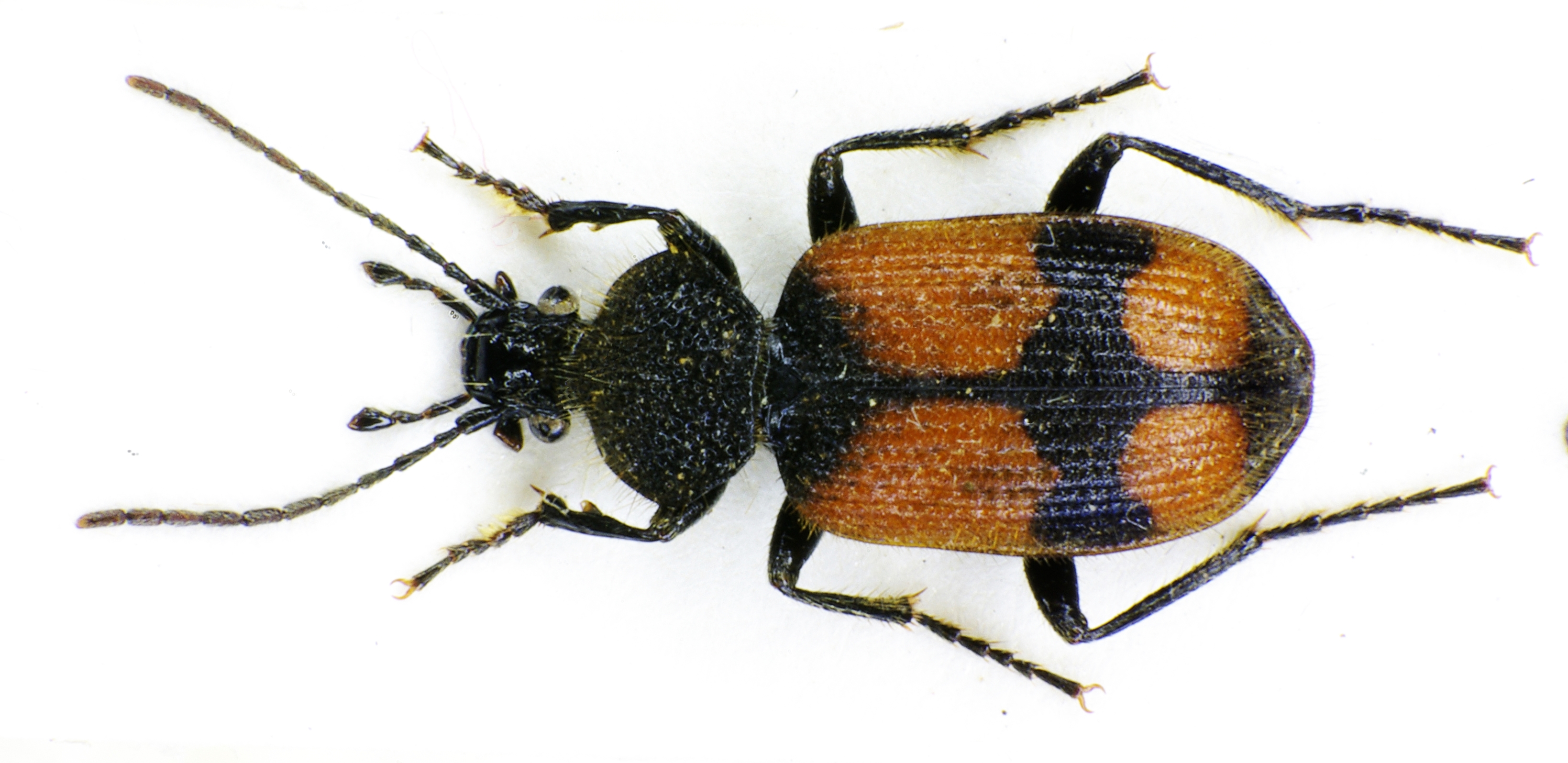|
Epaphius Apicalis
''Epaphius apicalis'' is a species of beetle in the family Carabidae. It is found in North America and Northern Eurasia Eurasia ( , ) is a continental area on Earth, comprising all of Europe and Asia. According to some geographers, Physical geography, physiographically, Eurasia is a single supercontinent. The concept of Europe and Asia as distinct continents d .... This species is sometimes considered to be in the genus '' Trechus''. References {{Taxonbar , from=Q14501519 Beetles described in 1845 Carabidae Beetles of North America Taxa named by Victor Motschulsky ... [...More Info...] [...Related Items...] OR: [Wikipedia] [Google] [Baidu] |
Victor Motschulsky
Victor Ivanovich Motschulsky, sometimes Victor von Motschulsky ( Russian: Виктор Иванович Мочульский; 11 April 1810, St. Petersburg – 5 June 1871, Simferopol) was a Russian entomologist mainly interested in beetles. Motschulsky was an Imperial Army colonel who undertook extended trips abroad. He studied and described many new beetles from Siberia, Alaska, the United States, Europe, and Asia. While he tended to ignore previous work and his own work on classification was of poor quality, Motschulsky made a massive contribution to entomology, exploring hitherto unworked regions, often in very difficult terrain. He described many new genera and species, a high proportion of which remain valid. Travels Motschulsky's travels included: *1836 - France, Switzerland and the Alps, northern Italy and Austria *1839–1840 - Russian Caucasus, Astrakhan, Kazan and Siberia *1847 - Khirgizia *1850–1851 - Germany, Austria, Egypt, India, France, England, Belgium an ... [...More Info...] [...Related Items...] OR: [Wikipedia] [Google] [Baidu] |
Ground Beetle
Ground beetles are a large, cosmopolitan distribution, cosmopolitan family (biology), family of beetles, the Carabidae, with more than 40,000 species worldwide, around 2,000 of which are found in North America and 2,700 in Europe. As of 2015, it is one of the 10 most species-rich animal families. They belong to the Adephaga. Members of the family are primarily Carnivore, carnivorous, but some members are Herbivore, herbivorous or Omnivore, omnivorous. Description and ecology Although their body shapes and coloring vary somewhat, most are shiny black or metallic and have ridged wing covers (elytra). The elytra are fused in some species, particularly the large Carabinae, rendering the beetles unable to fly. The species ''Mormolyce phyllodes'' is known as violin beetle due to their peculiarly shaped elytra. All carabids except the quite primitive flanged bombardier beetles (Paussinae) have a groove on their arthropod leg, fore leg tibiae bearing a comb of hairs used for cleaning the ... [...More Info...] [...Related Items...] OR: [Wikipedia] [Google] [Baidu] |
Eurasia
Eurasia ( , ) is a continental area on Earth, comprising all of Europe and Asia. According to some geographers, Physical geography, physiographically, Eurasia is a single supercontinent. The concept of Europe and Asia as distinct continents dates back to classical antiquity, antiquity, but their borders have historically been subject to change. For example, the ancient Greeks originally included Africa in Asia but classified Europe as separate land. Eurasia is connected to Africa at the Suez Canal, and the two are sometimes combined to describe the largest contiguous landmass on Earth, Afro-Eurasia. History Eurasia has been the host of many ancient civilizations, including those based in Mesopotamia, Egypt, the Indus Valley and China. In the Axial Age (mid-first millennium BCE), a continuous belt of civilizations stretched through the Eurasian Subtropics, subtropical zone from the Atlantic to the Pacific. This belt became the mainstream of world history for two millennia. ... [...More Info...] [...Related Items...] OR: [Wikipedia] [Google] [Baidu] |
Trechus
''Trechus'' is a genus of ground beetle native to the Palearctic (including Europe) and the Near East The Near East () is a transcontinental region around the Eastern Mediterranean encompassing the historical Fertile Crescent, the Levant, Anatolia, Egypt, Mesopotamia, and coastal areas of the Arabian Peninsula. The term was invented in the 20th .... There are more than 1,000 described species in ''Trechus''. The name of the genus is derived from the Greek word ''trécho'', meaning "I run".''Erklärung der wissenschaftlichen Käfernamen aus Reitter's Fauna Germanica'', Sigmund Schenkling. 1917. OnlineInternet Archive/ref> See List of ''Trechus'' species for the species in the genus ''Trechus''. References External links ''Trechus'' at Fauna Europaea Beetle genera {{Trechus-stub ... [...More Info...] [...Related Items...] OR: [Wikipedia] [Google] [Baidu] |
Beetles Described In 1845
Beetles are insects that form the order Coleoptera (), in the superorder Holometabola. Their front pair of wings are hardened into wing-cases, elytra, distinguishing them from most other insects. The Coleoptera, with about 400,000 described species, is the largest of all orders, constituting almost 40% of described arthropods and 25% of all known animal species; new species are discovered frequently, with estimates suggesting that there are between 0.9 and 2.1 million total species. However, the number of beetle species is challenged by the number of species in dipterans (flies) and hymenopterans (wasps). Found in almost every habitat except the sea and the polar regions, they interact with their ecosystems in several ways: beetles often feed on plants and fungi, break down animal and plant debris, and eat other invertebrates. Some species are serious agricultural pests, such as the Colorado potato beetle, while others such as Coccinellidae (ladybirds or ladybugs) eat aphids ... [...More Info...] [...Related Items...] OR: [Wikipedia] [Google] [Baidu] |
Carabidae
Ground beetles are a large, cosmopolitan family of beetles, the Carabidae, with more than 40,000 species worldwide, around 2,000 of which are found in North America and 2,700 in Europe. As of 2015, it is one of the 10 most species-rich animal families. They belong to the Adephaga. Members of the family are primarily carnivorous, but some members are herbivorous or omnivorous. Description and ecology Although their body shapes and coloring vary somewhat, most are shiny black or metallic and have ridged wing covers ( elytra). The elytra are fused in some species, particularly the large Carabinae, rendering the beetles unable to fly. The species '' Mormolyce phyllodes'' is known as violin beetle due to their peculiarly shaped elytra. All carabids except the quite primitive flanged bombardier beetles (Paussinae) have a groove on their fore leg tibiae bearing a comb of hairs used for cleaning their antennae. Defensive secretions Typical for the ancient beetle suborder A ... [...More Info...] [...Related Items...] OR: [Wikipedia] [Google] [Baidu] |
Beetles Of North America
Beetles are insects that form the order Coleoptera (), in the superorder Holometabola. Their front pair of wings are hardened into wing-cases, elytra, distinguishing them from most other insects. The Coleoptera, with about 400,000 described species, is the largest of all orders, constituting almost 40% of described arthropods and 25% of all known animal species; new species are discovered frequently, with estimates suggesting that there are between 0.9 and 2.1 million total species. However, the number of beetle species is challenged by the number of species in dipterans (flies) and hymenopterans (wasps). Found in almost every habitat except the sea and the polar regions, they interact with their ecosystems in several ways: beetles often feed on plants and fungi, break down animal and plant debris, and eat other invertebrates. Some species are serious agricultural pests, such as the Colorado potato beetle, while others such as Coccinellidae (ladybirds or ladybugs) eat ... [...More Info...] [...Related Items...] OR: [Wikipedia] [Google] [Baidu] |




